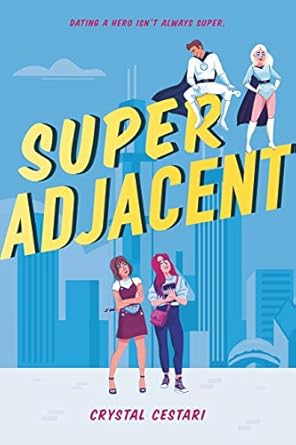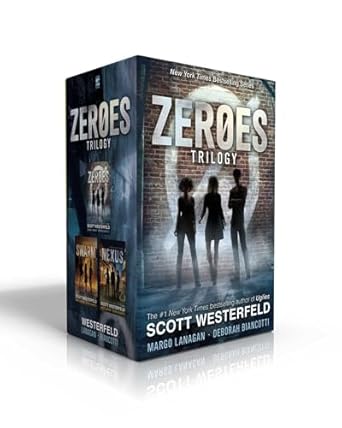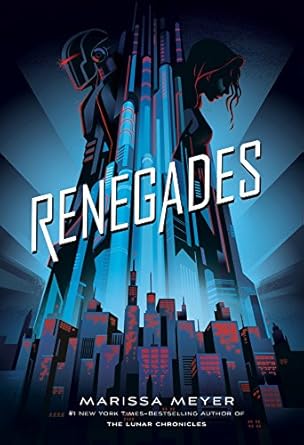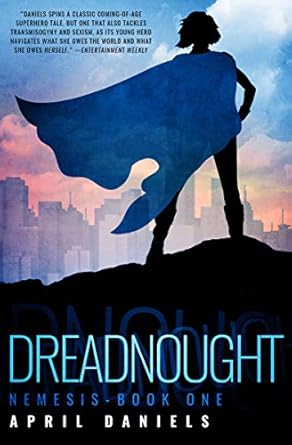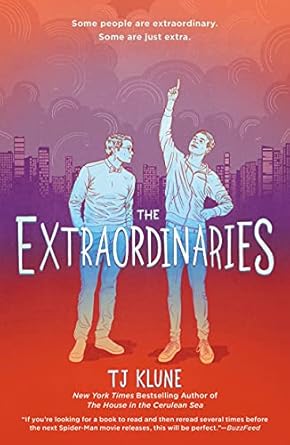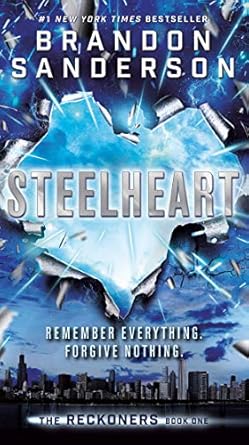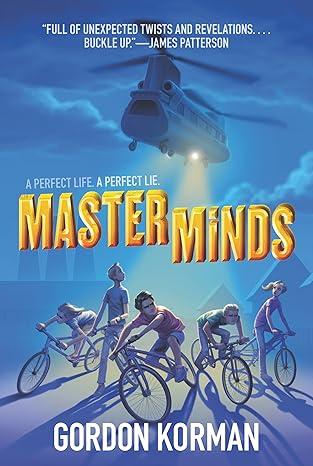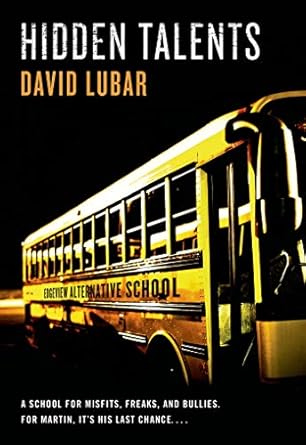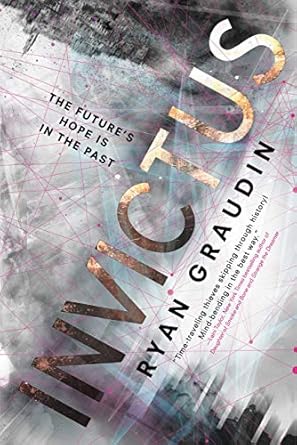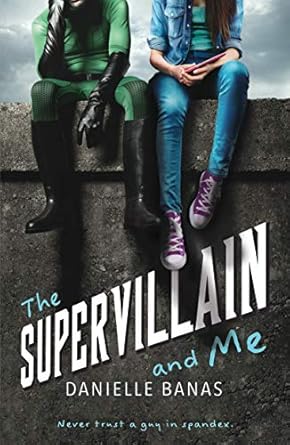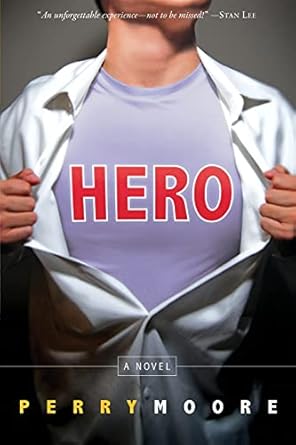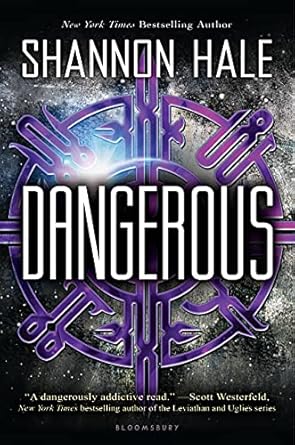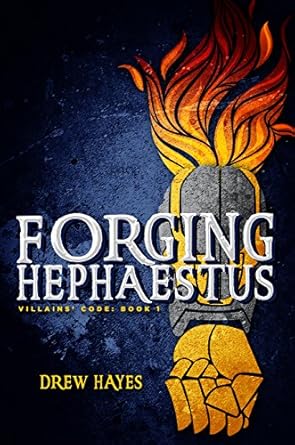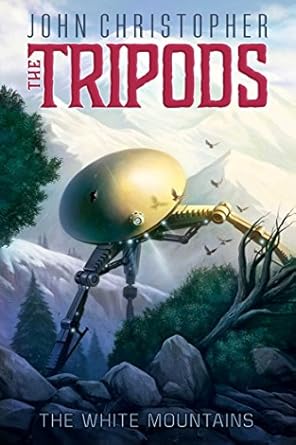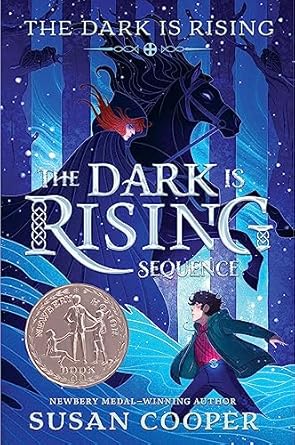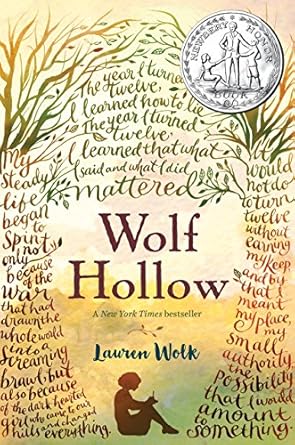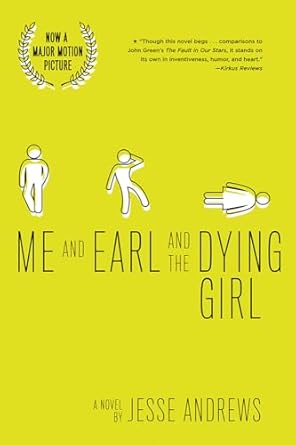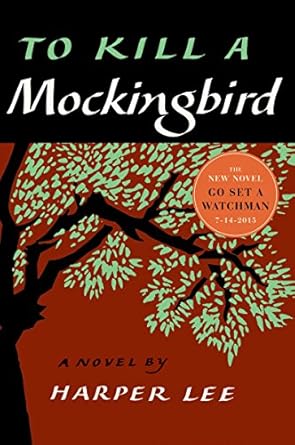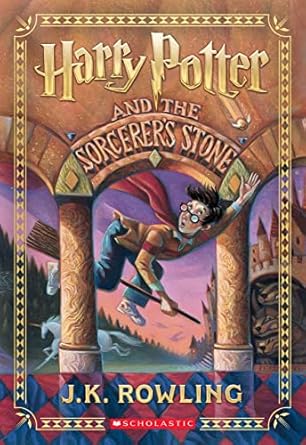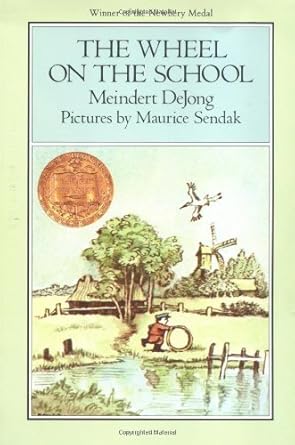Summary: In today's article, I have compiled 20 of the best books similar to Powerless for fans of superheroes, action, and high-stakes adventures. Here are my top 3:
- Super Adjacent by Crystal Cestari
- Zeroes by Scott Westerfeld, Margo Lanagan, Deborah Biancotti
- Renegades by Marissa Meyer
Books like Powerless offer a fresh take on superheroes, blending action, mystery, and personal growth. They explore what it means to be powerless in a world of superhumans, question heroism, and follow underdogs on thrilling adventures. If you love fast-paced stories with twists, these books are a must-read!
TOP 20: Best Books Similar to Powerless
- Super Adjacent by Crystal Cestari
- Zeroes by Scott Westerfeld, Margo Lanagan, Deborah Biancotti
- Renegades by Marissa Meyer
- Dreadnought by April Daniels
- The Extraordinaries by TJ Klune
- Steelheart by Brandon Sanderson
- Masterminds by Gordon Korman
- Hidden Talents by David Lubar
- Invictus by Ryan Graudin
- The Supervillain and Me by Danielle Banas
- Hero by Perry Moore
- Dangerous by Shannon Hale
- Forging Hephaestus by Drew Hayes
- The White Mountains by John Christopher
- The Dark Is Rising by Susan Cooper
- Wolf Hollow by Lauren Wolk
- Me and Earl and the Dying Girl by Jesse Andrews
- To Kill a Mockingbird by Harper Lee
- Harry Potter and the Sorcerer’s Stone by J.K. Rowling
- The Wheel on the School by Meindert DeJong
1. Super Adjacent
- Author: Crystal Cestari
- About: This novel offers a fresh perspective on the superhero genre by focusing on Claire, an intern at Warrior Nation, and Bridgette, a seasoned insider. Together, they navigate the complexities of being close to superheroes, especially when the heroes go missing, leaving them to save the day.
- Style of Writing: The narrative alternates between Claire and Bridgette's viewpoints, blending humor, romance, and action.
- Length: Approximately 384 pages.
- Year Written: Published in 2020.
- Emotional Impact: The story delves into personal growth, relationships, and the challenges of living in a superhero-dominated world, leaving readers with a thoughtful reflection on heroism and identity.
- Difficulty Level: Suitable for young adult readers and above; the language is accessible and engaging.
- Why Read It: “Super Adjacent” provides a unique take on the superhero narrative by exploring the lives of those without powers, offering relatable characters and a compelling plot that challenges traditional hero tropes.
2. Zeroes
- Authors: Scott Westerfeld, Margo Lanagan, and Deborah Biancotti
- About: The story follows six Californian teenagers, each with unique abilities that set them apart. When Ethan's power lands him in trouble during a bank robbery, the group, known as the “Zeroes,” must reunite to navigate the ensuing chaos and confront dangerous criminals.
- Style of Writing: The book features multiple perspectives, providing a dynamic and fast-paced narrative that combines action with character-driven storytelling.
- Length: Approximately 546 pages.
- Year Written: Published in 2015.
- Emotional Impact: “Zeroes” explores themes of friendship, identity, and the moral implications of power, prompting readers to ponder the complexities of heroism.
- Difficulty Level: Aimed at young adult readers; the prose is straightforward, making it an engaging read for a broad audience.
- Why Read It: Co-authored by three acclaimed writers, “Zeroes” offers a fresh and original take on superpowers, focusing on a diverse group of teens whose abilities come with significant challenges, making for a compelling and thought-provoking read.
3. Renegades
- Author: Marissa Meyer
- About: Set in the aftermath of a crumbled society, “Renegades” follows Nova, a girl seeking vengeance against the Renegades—a syndicate of prodigies with extraordinary abilities who established peace and order. As she infiltrates their ranks, she meets Adrian, a Renegade boy driven by justice, leading to a complex interplay of identities and loyalties.
- Style of Writing: The narrative alternates between Nova and Adrian's perspectives, blending action, intrigue, and character development.
- Length: Approximately 576 pages.
- Year Written: Published in 2017.
- Emotional Impact: The story delves into themes of justice, revenge, and moral ambiguity, prompting readers to question the fine line between heroism and villainy.
- Difficulty Level: Aimed at young adult readers; the language is accessible, with a plot that offers depth and complexity.
- Why Read It: “Renegades” offers a fresh perspective on the superhero genre, exploring the dynamics between heroes and villains, and challenging traditional notions of good and evil.
4. Dreadnought
- Author: April Daniels
- About: The story centers on Danny Tozer, a transgender teen who inherits the powers of Dreadnought, the world's greatest superhero. This transformation grants her the female body she's always desired, but also thrusts her into a complex world of heroism, identity struggles, and societal challenges.
- Style of Writing: The narrative combines action-packed superhero elements with poignant explorations of personal identity and societal issues.
- Length: Approximately 276 pages.
- Year Written: Published in 2017.
- Emotional Impact: “Dreadnought” provides a heartfelt and authentic portrayal of a transgender protagonist, offering readers both thrilling action and deep emotional resonance.
- Difficulty Level: Suitable for young adult readers; the prose is engaging and thought-provoking.
- Why Read It: This novel stands out for its inclusive representation and unique take on the superhero narrative, addressing themes of identity, acceptance, and courage.
5. The Extraordinaries
- Author: TJ Klune
- About: This novel follows Nick Bell, a queer teenager with ADHD who writes fanfiction about his favorite superheroes, known as “Extraordinaries.” After a chance encounter with his hero, Shadow Star, Nick becomes determined to acquire superpowers himself, leading to a journey of self-discovery and unexpected adventures.
- Style of Writing: The narrative combines humor, heartfelt moments, and action, providing an engaging and relatable portrayal of a teenager's life intertwined with superhero fantasies.
- Length: Approximately 400 pages.
- Year Written: Published in 2020.
- Emotional Impact: The story offers a touching exploration of identity, friendship, and the challenges of adolescence, leaving readers with a lasting impression of empathy and understanding.
- Difficulty Level: Suitable for young adult readers; the language is accessible, with a narrative that balances lightheartedness and depth.
- Why Read It: “The Extraordinaries” provides a fresh and inclusive take on the superhero genre, highlighting the experiences of a diverse protagonist and addressing themes of self-acceptance and the importance of community.
6. Steelheart
- Author: Brandon Sanderson
- About: Set in a dystopian future, the novel introduces a world where a cosmic event has granted certain individuals, known as Epics, superhuman abilities. However, these Epics become tyrannical rulers. The protagonist, David Charleston, seeks revenge against Steelheart, an invincible Epic who killed his father, by joining a rebel group called the Reckoners dedicated to assassinating corrupt Epics.
- Style of Writing: The book features a fast-paced, action-driven narrative with intricate world-building and plot twists characteristic of Sanderson's writing style.
- Length: Approximately 400 pages.
- Year Written: Published in 2013.
- Emotional Impact: “Steelheart” immerses readers in a high-stakes battle between humans and superhumans, provoking thoughts on power, corruption, and resilience.
- Difficulty Level: Aimed at young adult readers; the prose is straightforward, making it accessible while still offering depth in themes and character development.
- Why Read It: “Steelheart” presents a unique twist on the superhero narrative, exploring a world where those with powers are antagonists, and ordinary humans must rise to the challenge, offering a compelling story of courage and defiance.
7. Masterminds
- Author: Gordon Korman
- About: In the idyllic town of Serenity, everything seems perfect—too perfect. Eli Frieden and his friends discover that their lives are a lie; they're part of a secret experiment to create young criminals with mastermind abilities. As they uncover the truth, they plan a daring escape to expose the reality behind Serenity.
- Style of Writing: The narrative is fast-paced and suspenseful, with multiple viewpoints that keep readers engaged.
- Length: Approximately 336 pages.
- Year Written: Published in 2015.
- Emotional Impact: The story challenges perceptions of morality and identity, leaving readers contemplating the nature of free will and ethics.
- Difficulty Level: Aimed at middle-grade readers; the language is straightforward, making it accessible to a younger audience.
- Why Read It: “Masterminds” combines mystery, adventure, and thought-provoking themes, making it an exciting read for those interested in ethical dilemmas and action-packed plots.
8. Hidden Talents
- Author: David Lubar
- About: Martin Anderson arrives at Edgeview Alternative School, a place for misfit students. There, he discovers that his fellow students possess psychic abilities, and together, they learn to harness their powers while navigating personal challenges and societal expectations.
- Style of Writing: The book blends humor with heartfelt moments, providing a character-driven narrative that explores personal growth.
- Length: Approximately 224 pages.
- Year Written: Published in 1999.
- Emotional Impact: “Hidden Talents” offers an uplifting message about embracing one's uniqueness and the importance of friendship, leaving a lasting impression of hope and self-acceptance.
- Difficulty Level: Suitable for middle-grade readers; the prose is engaging and easy to follow.
- Why Read It: This novel provides a unique take on supernatural abilities, focusing on the personal development of its characters and the value of accepting oneself and others.
9. Invictus
- Author: Ryan Graudin
- About: Farway Gaius McCarthy, born outside of time to a time-traveling mother from 2354 AD and a Roman gladiator from 95 AD, dreams of exploring history. After failing his time-traveling exam, he captains a black-market time-traveling crew to steal valuables from the past.
- Style of Writing: The narrative combines science fiction with historical fiction.
- Length: Approximately 464 pages.
- Year Written: Published in 2017.
- Emotional Impact: “Invictus” explores themes of identity, destiny, and the fluidity of time, leaving readers contemplating the complexities of existence and the impact of choices across timelines.
- Difficulty Level: Aimed at young adult readers
- Why Read It: “Invictus” offers a unique blend of time-travel adventure and historical exploration, appealing to readers who enjoy complex plots, dynamic characters, and thought-provoking themes about time and existence.
10. The Supervillain and Me
- Author: Danielle Banas
- About: Abby Hamilton lives in a city protected by superheroes, including her brother, the Red Comet. Lacking powers herself, she never expected to be involved in the city's vigilante activities. However, after being saved by the alleged supervillain Iron Phantom, Abby is drawn into a conspiracy that challenges her perceptions of heroes and villains, revealing that the lines between good and evil are not always clear-cut.
- Style of Writing: The story is told from Abby's perspective, blending elements of romance, action, and humor, with a focus on character development and witty dialogue.
- Length: Approximately 378 pages.
- Year Written: Published in 2018.
- Emotional Impact: Leaving readers reflecting on the true nature of good and evil.
- Difficulty Level: Suitable for young adult readers
- Why Read It: Exploring themes of self-discovery, trust, and the often-blurred lines between heroes and villains.
11. Hero
- Author: Perry Moore
- About: The novel follows Thom Creed, a teenage boy with burgeoning superpowers and a secret he's afraid to reveal: he's gay. As he joins the League, the world's premier superhero organization, Thom navigates the challenges of his abilities, his father's mysterious past, and his own identity.
- Style of Writing: The narrative combines action-packed sequences with introspective moments, offering a heartfelt and personal perspective on the superhero genre.
- Length: Approximately 428 pages.
- Year Written: Published in 2007.
- Emotional Impact: “Hero” provides a poignant exploration of identity, acceptance, and the courage to be oneself, leaving readers with a lasting impression of empathy and understanding.
- Difficulty Level: Suitable for young adult readers; the language is accessible, with a narrative that balances action and emotional depth.
- Why Read It: This novel offers a unique and inclusive take on the superhero narrative, addressing themes of sexuality, family dynamics, and personal growth within a compelling and action-filled plot.
12. Dangerous
- Author: Shannon Hale
- About: The story centers on Maisie Danger Brown, a homeschooled teenager who dreams of adventure. When she wins a contest to attend astronaut camp, she uncovers a conspiracy that grants her and others alien powers, thrusting her into a battle to save Earth from an impending threat.
- Style of Writing: The narrative blends science fiction elements with coming-of-age themes, delivering a fast-paced plot with twists and character development.
- Length: Approximately 416 pages.
- Year Written: Published in 2014.
- Emotional Impact: “Dangerous” explores themes of bravery, self-discovery, and the weight of responsibility, leaving readers contemplating the true meaning of heroism.
- Difficulty Level: Aimed at young adult readers; the prose is engaging and straightforward, making it an enjoyable read for a wide audience.
- Why Read It: “Dangerous” offers a thrilling adventure with a strong, relatable female protagonist, combining elements of science fiction and personal growth that challenge traditional superhero tropes.
13. Forging Hephaestus
- Author: Drew Hayes
- About: In a world teeming with superheroes and villains, Tori Rivas, a metahuman with the ability to control fire, operates as a small-time thief. Her life takes a dramatic turn when she's captured attempting to rob a vault belonging to a secret guild of villains.
- Style of Writing: The narrative offers a multi-perspective approach, delving deep into character development and world-building.
- Length: Approximately 624 pages.
- Year Written: Published in 2017.
- Emotional Impact: “Forging Hephaestus” challenges traditional notions of morality, prompting readers to question the clear-cut distinctions between heroes and villains.
- Difficulty Level: Aimed at adult readers; the language is sophisticated yet accessible, with intricate plotlines that require thoughtful engagement.
- Why Read It: This novel offers a fresh perspective on the superhero genre by focusing on the oft-overlooked villains, presenting a nuanced exploration of morality, identity, and the societal constructs of good versus evil.
14. The White Mountains
- Author: John Christopher
- About: Set in a future where Earth is dominated by colossal three-legged machines known as Tripods, humanity has been subdued, with individuals being “Capped” in their adolescence—a process that implants a metal device controlling their thoughts.
- Style of Writing: The narrative is straightforward and descriptive, capturing the essence of a dystopian world through the eyes of a young protagonist. The prose effectively conveys the tension and urgency of the characters' journey, making it both engaging and thought-provoking.
- Length: Approximately 272 pages.
- Year Written: Published in 1967.
- Emotional Impact: Readers are invited to reflect on the importance of individuality and the human spirit's resilience against oppression.
- Difficulty Level: Suitable for middle-grade readers and above; the language is clear and accessible, with themes that resonate across age groups.
- Why Read It: Offers a compelling narrative that explores themes of control, rebellion, and the quest for freedom, making it a timeless read for those interested in speculative fiction.
15. The Dark Is Rising
- Author: Susan Cooper
- About: This fantasy novel follows 11-year-old Will Stanton, who discovers on his birthday that he is the last of the Old Ones, a group of immortals dedicated to protecting the world from the forces of the Dark.
- Style of Writing: The narrative is richly atmospheric, blending elements of British folklore with a poetic and suspenseful prose that immerses readers in a timeless battle between good and evil.
- Length: Approximately 216 pages.
- Year Written: Published in 1973.
- Emotional Impact: The story evokes a sense of wonder and urgency, leaving readers contemplating the enduring struggle between Light and Dark forces.
- Difficulty Level: Suitable for middle-grade readers and above.
- Why Read It: Compelling narrative that intertwines myth and reality, making it a must-read for fans of epic tales of heroism.
16. Wolf Hollow
- Author: Lauren Wolk
- About: Set in rural Pennsylvania during World War II, the novel centers on Annabelle, a young girl whose peaceful life is disrupted by the arrival of a new student, Betty Glengarry. Betty's malicious behavior escalates, leading to tragic consequences that force Annabelle to confront injustice and find courage within herself.
- Style of Writing: The prose is lyrical and evocative, painting a vivid picture of the setting while delving deep into the emotional landscape of the characters.
- Length: Approximately 304 pages.
- Year Written: Published in 2016.
- Emotional Impact: Explores themes of resilience, morality, and the loss of innocence, leaving a lasting impression on readers.
- Difficulty Level: Aimed at middle-grade readers but with themes that resonate with adults; the language is clear, with profound thematic elements.
- Why Read It: This novel offers a powerful exploration of human behavior and ethics, making it a thought-provoking read for those interested in character-driven stories set against historical backdrops.
17. Me and Earl and the Dying Girl
- Author: Jesse Andrews
- About: Greg Gaines, a high school senior, prides himself on blending in with all social groups without forming close ties. His only friend is Earl, with whom he creates amateur films. When Greg's mother insists he reconnects with Rachel, a former acquaintance diagnosed with leukemia, an unexpected and humorous journey of friendship ensues.
- Style of Writing: The narrative is candid and humorous, incorporating screenplay excerpts and direct addresses to the reader, creating an engaging and informal tone.
- Length: Approximately 295 pages.
- Year Written: Published in 2012.
- Emotional Impact: While tackling serious themes like illness and mortality, the novel maintains a lighthearted and irreverent approach, offering a fresh perspective on typical “cancer stories.”
- Difficulty Level: Suitable for young adult readers; the language is accessible, with a conversational style that resonates with a teenage audience.
- Why Read It: “Me and Earl and the Dying Girl” stands out for its unique blend of humor and heart, providing an authentic portrayal of teenage life and the complexities of facing a friend's terminal illness.
18. To Kill a Mockingbird
- Author: Harper Lee
- About: Set in the 1930s in the fictional town of Maycomb, Alabama, the novel follows young Scout Finch and her brother, Jem, as their father, Atticus Finch, defends Tom Robinson, a Black man falsely accused of raping a white woman. Through Scout's eyes, readers witness the racial prejudices and moral challenges of the Deep South.
- Style of Writing: The prose is clear and evocative, capturing the innocence of childhood while addressing profound social issues.
- Length: Approximately 281 pages.
- Year Written: Published in 1960.
- Emotional Impact: The novel delivers a powerful commentary on racial injustice and moral integrity, leaving a lasting impression about the importance of empathy and understanding.
- Difficulty Level: Appropriate for both young adult and adult readers; the language is straightforward, but the themes encourage deep reflection.
- Why Read It: “To Kill a Mockingbird” is a seminal work that explores themes of racism, morality, and the loss of innocence, making it a timeless and essential read.
19. Harry Potter and the Sorcerer’s Stone
- Author: J.K. Rowling
- About: Eleven-year-old Harry Potter discovers he is a wizard and attends Hogwarts School of Witchcraft and Wizardry, where he uncovers the truth about his parents' deaths and confronts the dark wizard Voldemort.
- Style of Writing: The narrative is imaginative and descriptive, creating a magical world that appeals to both children and adults.
- Length: Approximately 309 pages.
- Year Written: Published in 1997.
- Emotional Impact: The story combines themes of friendship, bravery, and self-discovery, enchanting readers and leaving them eager for more.
- Difficulty Level: Suitable for middle-grade readers and above; the language is engaging and accessible.
- Why Read It: As the beginning of a globally beloved series, this novel introduces readers to a richly detailed fantasy world and a hero's journey that resonates across generations.
20. The Wheel on the School
- Author: Meindert DeJong
- About: Set in a small Dutch village, the story follows six schoolchildren who embark on a mission to bring storks back to their town by placing a wheel on the school roof as a nesting place.
- Style of Writing: The prose is simple and heartfelt, capturing the determination and innocence of childhood.
- Length: Approximately 298 pages.
- Year Written: Published in 1954.
- Emotional Impact: The narrative emphasizes community, perseverance, and the joy of achieving a common goal, leaving readers with a warm and uplifting feeling.
- Difficulty Level: Ideal for middle-grade readers; the language is straightforward and the story is easy to follow.
- Why Read It: This classic tale highlights the power of collective effort and the beauty of pursuing a dream, making it an inspiring read for all ages.
Conclusion
If you loved Powerless, I think Super Adjacent, Zeroes, and Renegades are must-reads. Each one brings a fresh twist to superheroes, blending action, moral dilemmas, and unforgettable characters. I love how these books explore what it really means to be a hero—whether it’s navigating life among superhumans, discovering hidden abilities, or questioning the lines between good and evil. No matter which one you pick, I’m sure you’ll enjoy the thrilling, thought-provoking ride into a world of extraordinary powers.

